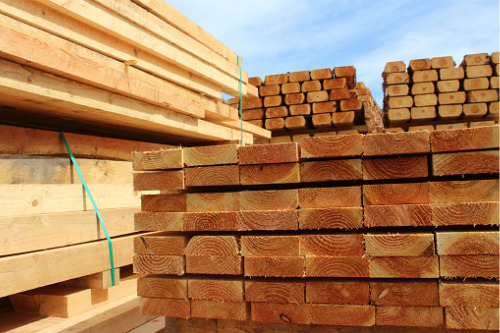If you did any DIY work this year you might have noticed just how much a few 2x4s cost you. 2020’s volatility has sent equity markets spinning, brought on a refi boom, and sent the price of lumber – a traditionally stable commodity – on historic swings. Lumber hit a low around $260 per 1,000 board feet in April before soaring to a high of almost $1,000 in September. That hasn’t just meant peeved home improvers at the hardware store, it has had a huge impact on the housing industry. This lumber price volatility has hampered American home builders’ ability to forecast, purchase, and plan new construction because they can’t count on a stable price for their key input in a time of serious housing demand.
David Logan, senior economist at the National Association of Home Builders (NAHB), explained that this historic price volatility had a serious impact on home-building earlier this year. He attributed the soaring prices to the COVID-19 lockdown – supply was restricted as mills were force to shut down operations and demand skyrocketed as employed people working from home decided to start doing DIY work en masse and housing demand bounced back with fervor.
“As prices rose, builders took hits to their profits,” Logan said. “It got to the point where projects were having to be put on hold or deferred, if not canceled outright. That was the case with both multifamily and single family because the projects simply weren’t financially feasible. Because of the increased cost, a homebuyer would no longer be able to afford the home, given the cost increases due to lumber. That effect has been something that we have seen bleed through into the housing market until relatively recently.”
Read more: Why the housing market boom might not last
In the past month prices have stabilized somewhat. While still higher than usual, Logan says enough mills have been able to reopen and bring their supply back online to make home building profitable again. Builders, crucially, can forecast based on current price levels.
A risk persists, Logan accepts, that new lockdowns and spiking COVID-19 cases could see mills locked down again. He said, however, that given how much more we know about the virus and how to keep operating despite it, another set of lockdowns wouldn’t have the same shocking impact on lumber prices.
Read more: Surging home prices driving down affordability in California
While Logan said mortgage professionals should keep abreast of this key housing input and understand how high lumber prices might impact home availability, he said they can feel reassured that housing demand has remained high despite these price shocks. He believes a second lockdown would only serve to create more pent up demand for housing, causing another elevated period of purchasing and construction.
“The industry is of the opinion that that now that prices have receded, we will once again be back to some state of stability, which is good news for builders,” Logan said. “It allows them to write contracts further out once again, it allows them to close contracts for homes they had not been able to afford before. It will allow builders to satisfy what has been pent up demand here, which has been exacerbated by historically low interest rates. We expect those rates to last through 2021 and beyond to some extent so, the purchasing power of the American perspective homebuyer should remain healthy.”

